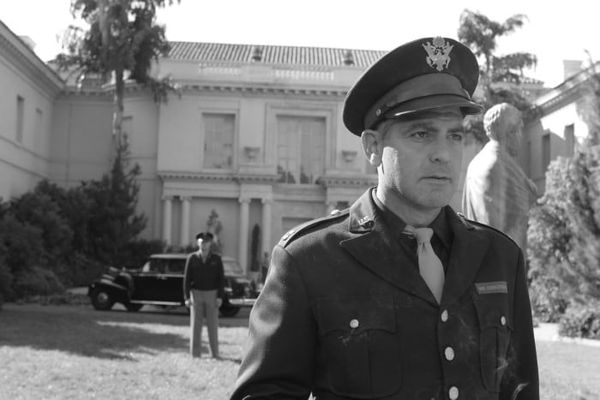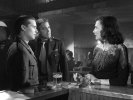Eye For Film >> Movies >> The Good German (2006) Film Review
The Good German
Reviewed by: The Exile

These days it can be difficult to remember that Steven Soderbergh once made fluid, engaging movies filled with real people instead of props for his latest cinematic experiment. During the golden years of 1998-2001, when he produced, in rapid succession, Out Of Sight, The Limey, Erin Brockovich, Traffic and Ocean’s Eleven, it seemed he could turn his hand to any genre and make money. How things have changed. The best that can be said of Solaris is that it did no harm to Tarkovsky, while Bubble’s flirtation with amateur theatrics was, at best, mildly entertaining to the 12 people who actually saw it. But with The Good German, Soderbergh has devolved into a narcissistic tinkerer, a director more interested in doing research than making movies.
Fashioning - and bastardising - Joseph Kanon’s mournful romance into a brutish thriller, Soderbergh and his scriptwriter, Paul Attanasio, package the film like a Forties noir. Taking homage to the point of attempted replication, Soderbergh, acting as his own cinematographer (under the pseudonym Peter Andrews), imposes upon himself the technical restrictions and techniques of the period, including fixed lenses and old-fashioned boom microphones. (He even opens the film with a vintage Warner Bros logo.) At the same time, he fills his scenes with decidedly modern dialogue and sexually explicit material, creating a disconnect between content and packaging that gives the entire enterprise a surreal artifice. Everything feels wrong: characters who don’t belong in their surroundings, scenes that try to mimic Casablanca and The Third Man for no good reason and without the artistry of either. But all this window dressing is just sleight of hand; pull it aside and there’s no movie there.

Set in postwar Berlin on the eve of the Potsdam peace conference, The Good German effectively blends newsreel footage and LA sets to create a city blasted by bombs and infested with scavengers. Picking his way over the rubble comes Jake Geismar (George Clooney), a journalist covering the conference and hoping to reconnect with an old flame, his onetime German mistress, Lena (Cate Blanchett). What he doesn’t expect is to blunder into a murder, Lena’s scientist husband (Christian Oliver) and evidence of Nazi war crimes, a morass of intrigue and skullduggery so confusing it drains the picture of all romance and most of its life. Not even Bogart could find his way through this.
On the one hand, it’s easy to see what Soderbergh is going for here: a cold-blooded examination of the moral relativism that held sway while America, Russia and Germany prepared for the Cold War by fighting over the bones - and the scientists - of Berlin. There are no good guys (America was on the verge of dropping an atomic bomb on Japan) and the film’s blinding whites and inky blacks - and not much in between - lend it an experimental look that’s the opposite of retro. But the director’s near-clinical detachment, while effectively painting an atmosphere of rampant paranoia and distrust, also extinguishes any heat between its leads, both of whom appear fatally adrift.
For the first time since Solaris, Clooney’s relaxed, old-fashioned charm is completely absent. Stiff and constipated, his Jake is a walking uniform with eyes that keep darting around as though looking for an escape (since he spends most of the movie getting kicked in the groin, who can blame him?). Blanchett fares slightly better; lit like Dietrich and dressed like Bergman, she looks gorgeous but fails to humanize a character who’s less sympathetic than the iceberg in Titanic. But the movie’s greatest casting error is the cherubic Tobey Maguire as a thuggish army driver with sadistic inclinations. His sodomizing of Blanchett is as believable as Richie Rich doing Bettie Page.
Artificial and gloomy, The Good German will struggle to find an audience, one with the patience to indulge a director more interested in recreating the conflicts of the past than acknowledging the struggles of the present.
Reviewed on: 04 Mar 2007



















